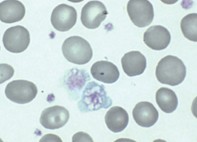Peer Reviewed
Feature Article Haematology
Investigating thrombocytosis
Abstract
There are many possible causes for thrombocytosis. Usually the thrombocytosis is reactive rather than being due to a primary haematological disorder, and in most cases the cause will be obvious and readily determined without the need for extensive investigations.
Key Points
- Thrombocytosis is more often reactive than due to a primary haematological disorder.
- Diagnosing the cause of thrombocytosis is important to enable appropriate management.
- The cause of thrombocytosis can often be determined by reviewing previous full blood counts, considering any other abnormalities on the full blood count and taking a detailed history.
- There are a small number of patients with thrombocytosis in whom the cause will remain uncertain.
- Some laboratory tests may assist in difficult cases; however, there is none that will definitely differentiate reactive from autonomous thrombocytosis.
- Patients with a primary haematological disorder and those in whom the diagnosis has not been determined should be referred to a haematologist.
Purchase the PDF version of this article
Already a subscriber? Login here.

